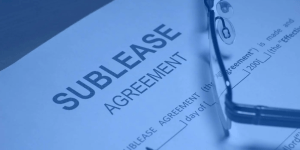In the dynamic housing market of Ontario, subleasing offers a flexible arrangement for temporary living situations. Whether one is a property owner, a current tenant, or someone seeking short-term accommodation, understanding the intricacies of a sublease agreement under the Residential Tenancies Act (RTA) is fundamental. This guide provides an informative overview, highlighting key aspects relevant to all parties involved.
What Constitutes a Sublease in Ontario?
A sublease arises when a tenant (often referred to as the “sublessor”) temporarily grants exclusive possession of their entire rental unit to another individual (the “subtenant”) for a defined period. A crucial characteristic is that the original tenancy agreement between the primary tenant and the property owner remains in effect. This means the original tenant retains the primary responsibility for ensuring rent is paid and that the property is maintained in accordance with the head lease. The subtenant typically pays rent to the original tenant, who then fulfills their obligations to the property owner. A key differentiator from an “assignment” is the original tenant’s intention to return to the unit at the end of the sublease term.
Essential Elements for a Valid Sublease
For a sublease to be legally sound in Ontario, several conditions must be met:
- Written Consent of the Property Owner: Obtaining the property owner’s written permission is paramount. The RTA stipulates that property owners cannot unreasonably withhold consent for a sublease. If consent is refused, a valid reason must be provided (e.g., concerns about the proposed subtenant’s ability to meet financial obligations or a history of property damage). Should a property owner unreasonably refuse consent or fail to respond to a request within seven days, the tenant may have grounds to apply to the Landlord and Tenant Board (LTB) for authorization to sublet or, in some cases, to terminate their own tenancy. It is important to note that property owners are not permitted to charge fees for granting consent beyond reasonable out-of-pocket expenses, such as for a credit check.
- Formal Written Agreement: While not strictly mandated, creating a comprehensive written sublease agreement between the original tenant and the subtenant is strongly advised. This document clarifies the terms and responsibilities for both parties, minimizing potential misunderstandings.
- Defined Term: A sublease must have clear start and end dates. Unlike a standard month-to-month tenancy, a sublease cannot extend indefinitely. The sublease’s end date must also precede the termination date of the original tenant’s lease agreement.
- Rent Limitations: The rent charged to the subtenant by the original tenant cannot exceed the amount the original tenant pays to the property owner, unless clearly itemized and agreed-upon additional costs (like utilities or internet) are included.
- Adherence to Original Lease Terms: The subtenant is bound by all the terms and conditions of the original lease agreement that exists between the original tenant and the property owner.
Key Components of a Sublease Agreement
A well-drafted sublease agreement should meticulously detail:
- Identities: Full names and contact information for the original tenant (sublessor), subtenant, and the head landlord.
- Property Description: The complete address of the rental unit.
- Sublease Period: Precise start and end dates of the sublease.
- Financial Terms: The agreed-upon rent amount, payment schedule, and details regarding any security deposit and its return conditions.
- Utility & Expense Allocation: Clear assignment of responsibility for utilities (electricity, water, heating, internet, etc.) and other shared expenses.
- Property Usage: Any specific limitations or permitted uses of the property by the subtenant.
- Maintenance & Repairs: Clear outline of responsibilities for property maintenance, minor repairs, and cleanliness during the sublease term.
- Integration with Original Lease: A clause confirming the subtenant’s obligation to abide by the terms and conditions of the original lease.
- Governing Law: Specification that the agreement is governed by the laws of Ontario.
- Signatures: Signatures from both the original tenant and subtenant are essential, with witnessing recommended.
Important Considerations for All Parties
- Continuing Responsibility: The original tenant remains ultimately accountable to the property owner for the rental unit. Should the subtenant default on rent, cause damage, or breach any terms of the original lease, the primary tenant is legally responsible.
- Due Diligence: Thoroughly screening potential subtenants, including reference checks and possibly credit checks, is a prudent measure to ensure reliability and minimize potential issues.
- Documentation is Key: Maintaining meticulous records of all communications, including the property owner’s written consent and the fully executed sublease agreement, is crucial for dispute resolution.
- Property Condition: Documenting the condition of the unit through photographs or a written checklist before the subtenant moves in and after they vacate can prevent disputes over damages.
- Subtenant’s Rights: Subtenants in Ontario derive their rights from the original tenant’s lease and the RTA. Their occupancy is contingent on the validity and duration of the original tenancy.
Navigating Resources and Legal Guidance
For further information and assistance, various resources are available:
- Residential Tenancies Act (RTA): The foundational provincial legislation governing residential tenancies in Ontario.
- Landlord and Tenant Board (LTB): This administrative tribunal provides forms, guidelines, and resolves disputes between landlords and tenants. Their website offers valuable information.
- Community Legal Clinics: Organizations such as the Advocacy Centre for Tenants Ontario (ACTO) and Community Legal Education Ontario (CLEO) provide free legal information and resources related to tenant rights.
- Legal Professionals: While online templates for sublease agreements exist, consulting with a legal professional specializing in Ontario landlord-tenant law is always recommended to ensure the agreement is comprehensive and legally sound for individual circumstances.
Understanding and adhering to these guidelines for sublease agreements in Ontario can foster transparent and successful temporary living arrangements for all involved.



